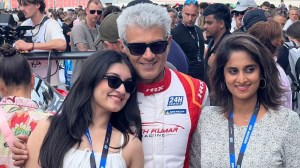India’s magic realism
One of the great legacies free India inherited was the legacy of governance. It taught us to preserve institutions and to get institutions t...

One of the great legacies free India inherited was the legacy of governance. It taught us to preserve institutions and to get institutions to grow. We were dealing with a nation where 55 per cent lived below the poverty line, which had almost no industry, an absolute lack of resources. And yet there was the challenge of preserving democracy and of building every institution in a democracy.
When I look at the past 56 years, I look at the legacy we got in terms of parliamentary democracy. Men speaking hundreds of different languages and practising different religions participate in a common process.
India is indeed a paradox, where ancient tradition and modernity combine, diversities combine and yet the country holds together. And parliamentary democracy was an institution where each one of these diverse views — ideological, cultural, religious — merged into one.
We built institutions: governance based on the rule of law; an election system absolutely free and fair; a judicial institution not only free and fair but very powerful with at times the balance swinging in its favour; a press which is belligerently free and independent; an army not only high in discipline and professionalism but also non-partisan; a civil service totally professional.
Since the partition of India, we have not only been able to preserve those institutions but allowed them to grow. On the other side of the partition, for three-quarters of the past 56 years, each one of them has gradually declined.
But while we also inherited liabilities. We were a nation structured as a welfare state but without industrialisation and the resources to support it. To sustain democracy for an affluent country is not such a challenge. To sustain growth in a non-democratic system, where decision making is easier, is also not difficult. But to sustain it in the midst of 55 per cent poverty, race for development and yet carry a popular mandate was incredible.
It was a slow and painful process. Only in the past 15 years or so have we have gathered pace. Where do we stand today? A country of a billion, with a middle class upwards of 250 million — larger than the United States — and within that middle-class is growing a large knowledge resource.
Some 1,400 engineering colleges and most of them having come up in the past 15 years. That’s the kind of knowledge resource India is talking about.
With population stabilising and even declining in many developed economies, India is now a provider of knowledge. A recent study showed 30 per cent of doctors in the United States were of Indian origin. That’s only an indication of the extent of the knowledge resource India is throwing up. And this was not in IT, which we are now conventionally identified with.
Almost every sunrise industry, whether IT, pharmaceuticals, biotechnology, is an area of growth for India. We always grudged the ‘‘Made in India’’ brand was not very acceptable. But the ‘‘Serviced in India’’ brand is becoming so.
The past 56 years have not been without problems. We faced four wars, all of them thrust upon us. If we regard Kargil too as a war, it would be five wars. A war every 10 years, terrorism for the past 15 years — targetting symbols of our democracy such as Parliament and of our economy such as the Mumbai Stock Exchange — involves quantified and unquantified costs.
Not a year passes without a natural calamity. Last year we faced the most terrible drought in the past 50 years, 18 states were affected. The year before that saw one of the worst earthquakes in history.
And yet India shows tremendous resilience. I remember when the war in Kargil was fought, we were almost simultaneously in a national election.
Our neighbour was on the verge of losing its democracy.
To emerge out of each crisis and emerge out of it stronger, this is the character of India. True, we have had social aberrations and tensions. Yet it was democracy that gave us the space to absorb these. Our plurality and our tolerance allowed a certain space in the political system.
From Algeria to the Philippines, the entire world seems to be affected by the global terrorist threat. But not one Indian Al-Qaida activist has surfaced. This is one of the great features of India. It is a tribute to the fact that our political system has room for conflicting opinions.
Even when we were ruled and we were struggling for freedom, it was a very unique struggle. There was no element of personal bitterness. Today it is not merely history or merely the commonality in political systems but the great Indian diaspora — so much a part of British life — that binds us. It’s our trade that binds India and Britain. A mutual investment binds us.
I understand India seeks investment from various parts of the world. But a growing and emerging India is also investing outside. Almost 400 Indian corporates have investments in Britain.
What ties us together? The spirit of freedom, the spirit of democracy. Our great desire to fight international terrorism, fight poverty, fight hunger and work for a better world. A world in which Britain has been a traditional leader. A world in which India now has an important role to play.
(The author is Union minister of commerce and industry and law and justice. This is an edited version of his the Clement Attlee Memorial Lecture delivered in London on July 1, 2003)



- 01
- 02
- 03
- 04
- 05




























